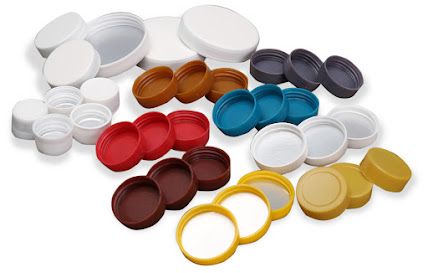Food Robotics Market Outlooks 2020: Market Size, Cost Structures, Growth rate and Industry Analysis to 2026
The Food Robotics Market report gives a
holistic overview of the market scenario to offer accurate forecasts for the
coming years, highlighting the competitive landscape, with industry-wide market
segmentation, critical trends, and strategic recommendations to help readers
sustain their position in the global market. The Food Robotics market report
also focuses on leading companies in the market and creates descriptive company
profiles, market shares, product offerings, sales, and sales.
The report includes the latest coverage of the
impact of COVID-19 on the Food Robotics industry. The incidence has affected
nearly every aspect of the business domain. This study evaluates the current
scenario and predicts future outcomes of the pandemic on the global economy.
Ask for Sample Report: https://www.reportsanddata.com/sample-enquiry-form/2831
Ask for Sample Report: https://www.reportsanddata.com/sample-enquiry-form/2831
Some of the
market players studied in this report are:
Mitsubishi Electric
Corporation (Japan), ABB Group (Switzerland), Kawasaki Heavy Industries Ltd.
(Japan), Rockwell Automation Incorporated (U.S.), and FANUC Corporation
(Japan). KUKA AG (Germany), Seiko Epson Corporation (Japan), Yaskawa Electric
Corporation (Japan), Staubli International Corporation (Switzerland), Mayekawa
Mfg. Co., Ltd. (Japan), Universal Robots A/S (Denmark), and Bastian Solutions
Inc. (U.S.)
Segments covered in the report:
On the basis of type, the food robotics market
has been segmented as follows:
·
Articulated
·
Cartesian
·
SCARA
·
Parallel
·
Cylindrical
·
Collaborative
·
Others
On the basis of payload, the food robotics
market has been segmented as follows:
·
Low (<10 Kg)
·
Medium (>10
Kg–<100 Kg)
·
Heavy (>100 Kg)
On the basis of application, the food robotics
market has been segmented as follows:
·
Palletizing
·
Pick & place
·
Packaging
·
Repackaging
·
Processing
·
Others
On the basis of end-user industry, the food
robotics market has been segmented as follows:
·
Beverages
·
Meat, poultry, and
seafood
·
Dairy
·
Bakery
·
Fruits &
vegetables
·
Confectionery
·
Others
Market
Segment by Regions, regional analysis covers:
North America (United States,
Canada, and Mexico)
Europe (Germany,
France, UK, Russia, and Italy)
Asia-Pacific (China, Japan,
Korea, India, and Southeast Asia)
South America (Brazil,
Argentina, and Colombia)
Middle East and
Africa
(Saudi Arabia, UAE, Egypt, Nigeria, and South Africa)
Ask for Discount:
https://www.reportsanddata.com/discount-enquiry-form/2831
Key point summary of the report:
Critical Aspects: The Global Food Robotics Market
research report sheds light on the latest growth trends, development, and
elaborates on the research methodologies employed. The market aspects that
directly influence the growth of the market include the prevalent marketing strategies
adopted by the leading companies, expansion tactics, and the product offerings
of the companies, underlining that factors that could potentially affect the
growth of the market segments and subsequently the overall market. The research
study has examined these factors elaborately.
Market Overview: The study also takes into
consideration crucial market aspects, including R&D, new product launches,
deals, joint ventures, mergers and acquisitions, collaborations, and growth of
the key industry participants, both on the regional and global levels.
Key Features: The report performs an in-depth
analysis of some of the crucial factors, such as cost, capacity, rates of
production and consumption, gross revenue, import/export status, demand-supply
dynamics, growth rate, profit margin, and market share. Apart from this, the
report also focuses on significant factors that might affect the market trends
and categorizes the market into different segments and sub-segments.
Analytical Tools: The Global Food Robotics Market
report includes authentic and relevant information relating to the overall
market, key players, and their reach in the market with the help of precise
analytical tools like SWOT analysis, Porter’s five forces analysis, analysis of
the return on investment, and feasibility study on recent projects. These tools
have been utilized to study the market position of the major industry players
elaborately.
Target readers: The report gives detailed
insights into the vendors, distributors, suppliers, manufacturers,
stakeholders, and readers looking to understand the market before investing.
View Market Research Report @ https://www.reportsanddata.com/report-detail/food-robotics-market
ReportsandData.com
gives
complete market coverage, analysis, verified information, key facts and
figures, and research on both the global and regional levels, leading
companies, niche and emerging sectors including food and beverages, technology,
media, pharmaceuticals, chemicals and materials, packaging, and FMCG, among
others. Our report has been designed to give a holistic overview of the market
to provide accurate forecasts, and highlight the competitive setting,
industry-wide market segmentation, and growth trends and provides the reader
with suggestions for optimum expansion approaches to allow the readers to
maintain an upper hand in the competition.




Comments
Post a Comment